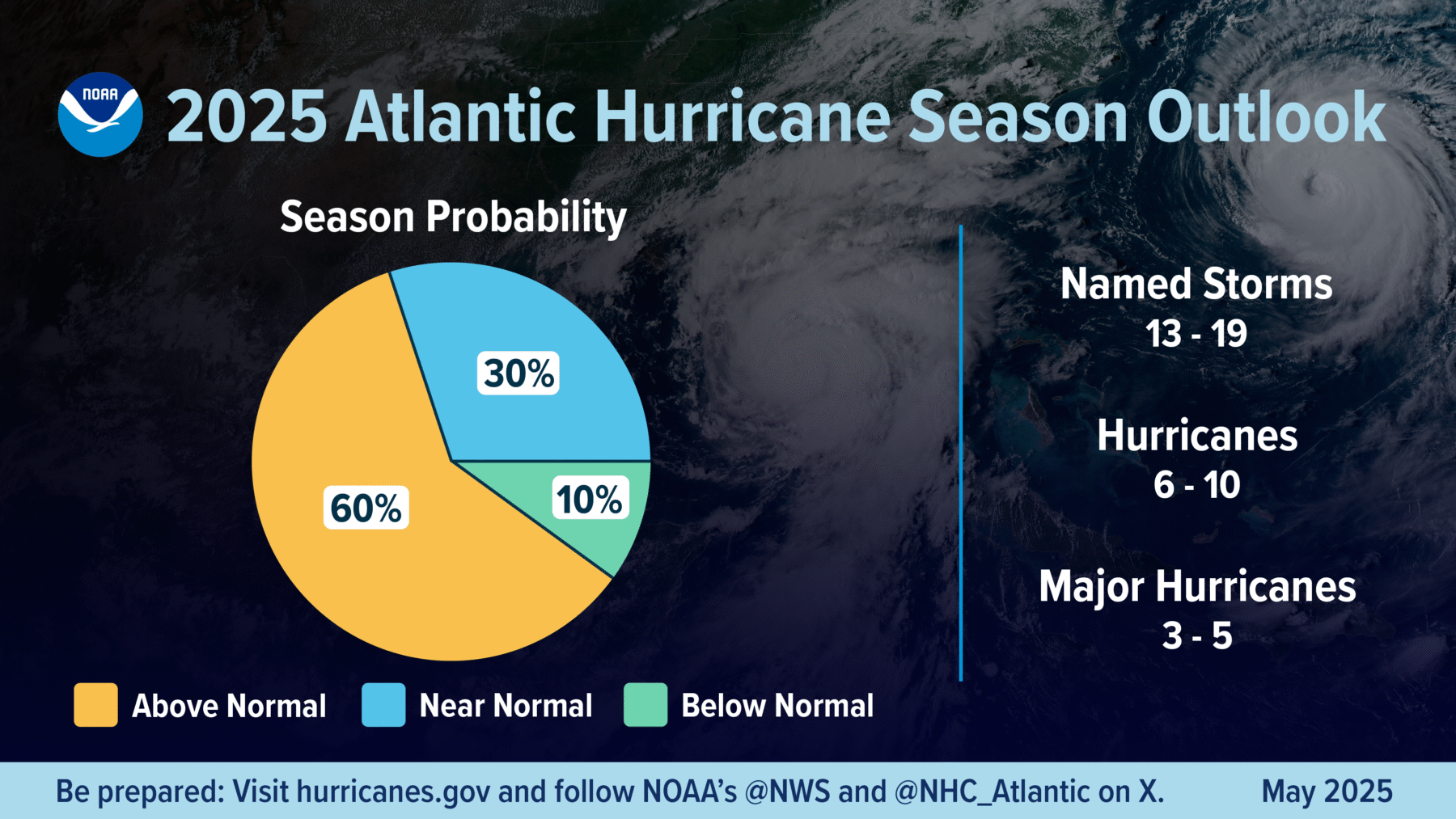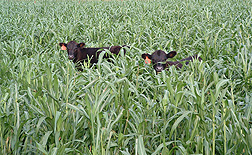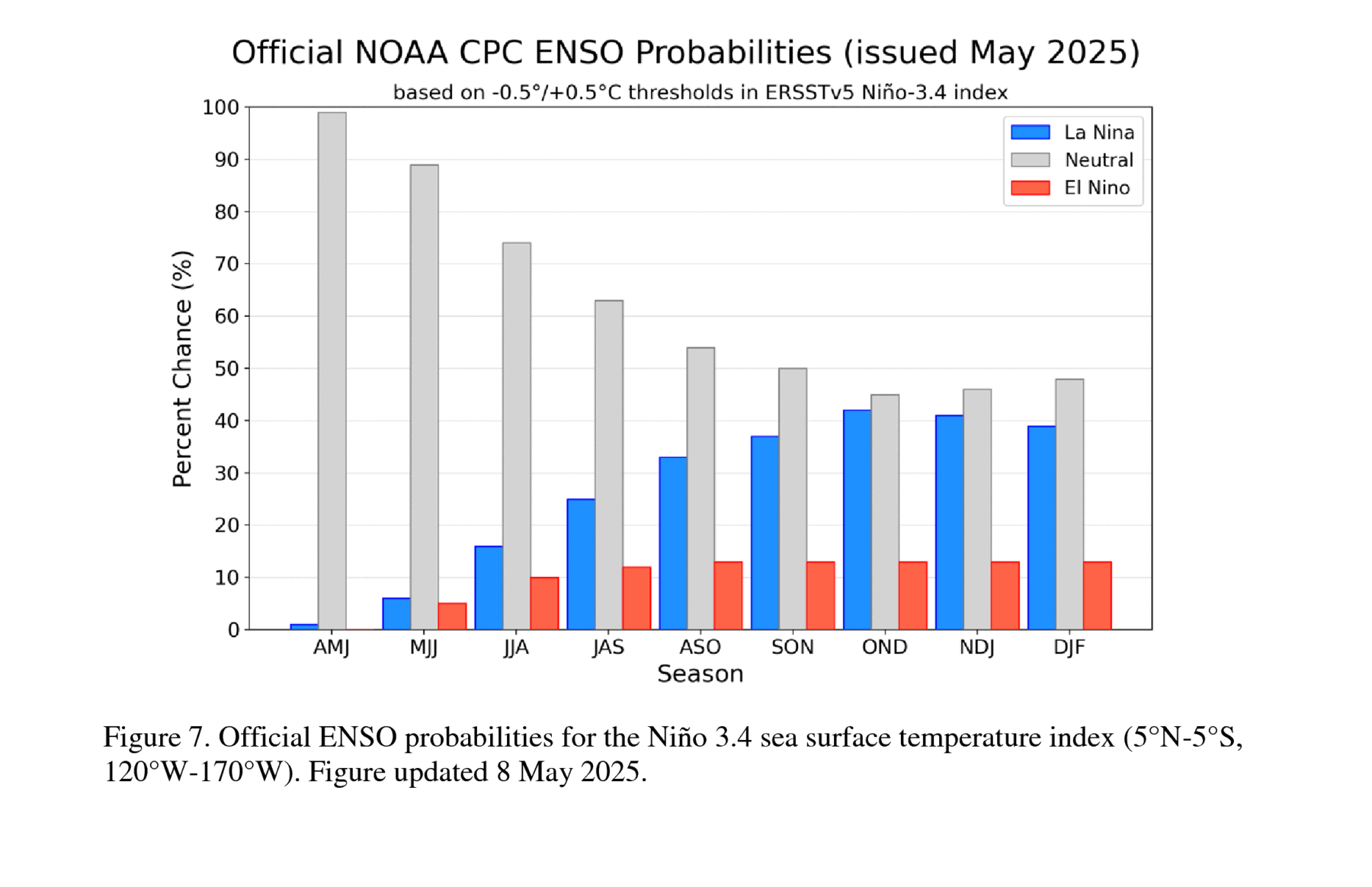Climate and Ag in the news
-

NOAA released their official forecast for the 2025 Atlantic hurricane season today, just a few days in advance of the official start of the season on June 1. As expected, it was fairly close to earlier seasonal predictions posted by Colorado State University and other groups. It shows that the number of named storms is…
-

Here is an interesting article from the Missouri Ruralist describing how three different farm families have adapted their cattle farms to respond to changing markets as well as changing climate conditions to make sure that their farm is sustainable and can be handed down to the next generation of their farm families. In all three…
-

If you have never heard the term “thirstwave”, you are not alone. I saw it for the first time this week in an article in Nautilus. According to the article, “two hydrologists, Meetpal Kukal and Mike Hobbins, from the University of Idaho and University of Colorado respectively, recently coined the term, which is meant to…
-

Here is a story on a topic you don’t read about every day. A new study done in collaboration between NASA and the Smithsonian shows that satellites may be able to help identify volcanoes that are about to erupt by looking for signs of enhanced carbon dioxide emissions in plant life downwind of the volcano.…
-

If you have heard the term “atmospheric river” you may think of them as plumes of very humid air that blow into the US West Coast, bringing flooding rain to locations in that part of the country. But the Southeast also has atmospheric river events, including the one that occurred this past weekend with the…
-

The latest ENSO advisory was released today by NOAA’s Climate Prediction Center. It shows that ENSO is expected to continue to be in neutral conditions through the summer although the chance of La Nina returning goes up later in the year. El Nino is also possible but much less likely than either neutral or La…
-

Here is a listing of recent stories on agriculture and climate in the Southeast that you might find interesting. Specialty Crop Grower: So Far, So Good: Florida Blueberry Harvests Strong Drovers Newsletter: Considerations for Feeding Cattle Through Drought IFAS: Heat Stress and its Impact on Cattle Reproduction Specialty Crop Grower: Planting Cotton Amid Worsening Drought…